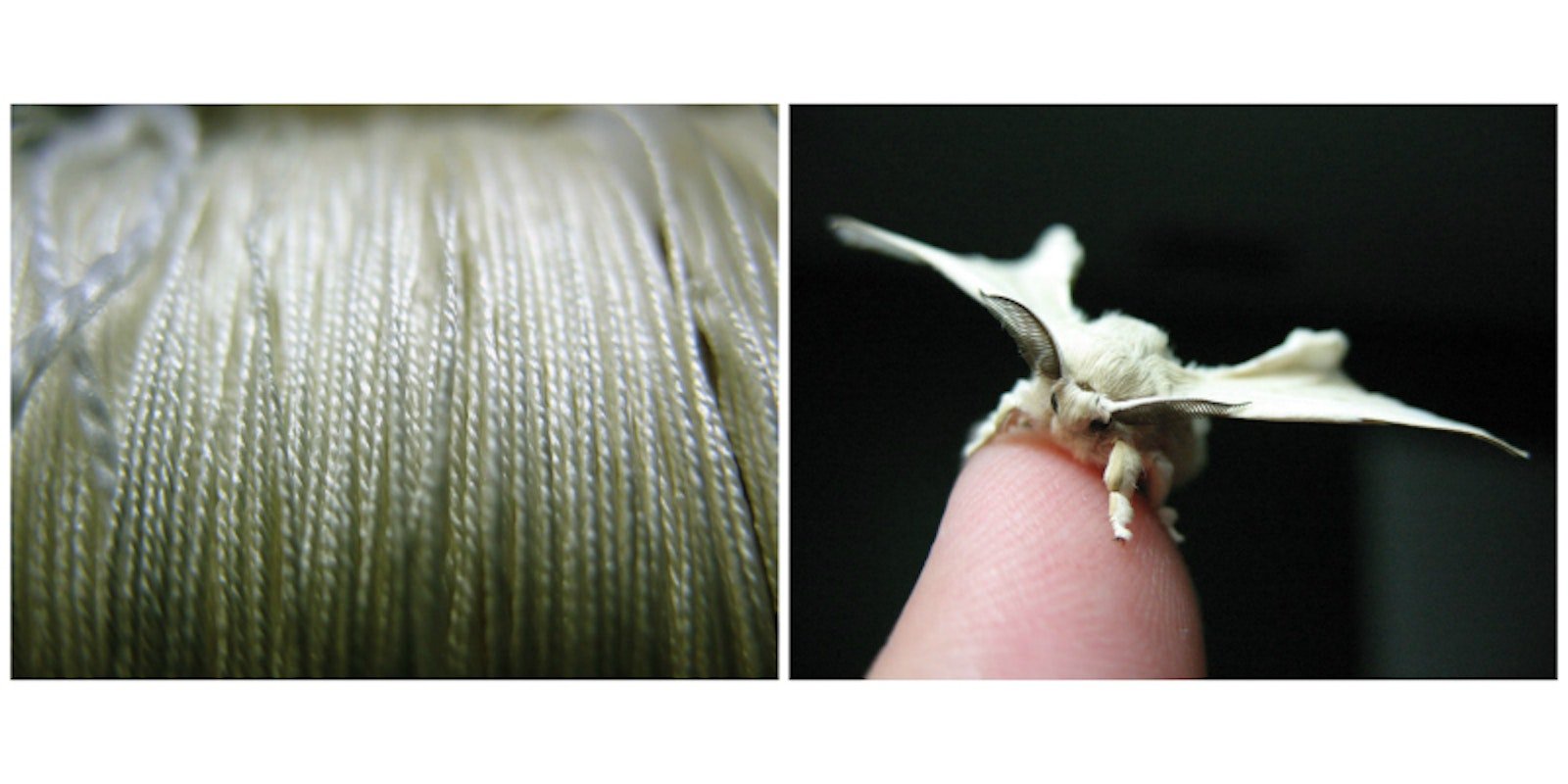The Queen of Fibers
Silk is one of the marvels of the natural world, and making silk for embroidery is one of the wonders of human ingenuity. A silkmoth caterpillar (Bombyx mori) eats mulberry leaves every day for a month, and then spins a cocoon with nearly a mile of single, unbroken thread as fine as a cobweb. The Chinese began domesticating silkworms somewhere between 5,000 and 7,000 years ago. They learned to unwind the cocoons, joining the cobweb-weight cocoon strands into a filament and twisting that filament to make threads to create and embellish textiles.
Filament silk is translucent, and it both reflects and refracts light, making it appear glossy and luminous. It takes well to dyes, both synthetic and natural, so silk can be colored to an astounding range of hues, shades, and tints. Physically, silk is smooth, supple, soft, and strong. All of these factors add up to silk being perfect for a wide range of embroidery applications.
A denier coin from the collection of Michael Cook. Fourteenth century. The coin was used to balance a scale against a measured length of silk filament. Skeins of silk were put into one side of the scale and dropped coins into the other side until it balanced, and that was how many denier the silk weighed. The coin is shown with Michael Cook’s handmade organzine sewing thread.
As it comes out of the caterpillar’s spinnerets, silk is a doubled strand, called a bave, composed of two proteins: the long, shiny fiber called “fibroin” and the stiff, sticky gum called “sericin.” Sericin binds the long strand of fibroin together to make the cocoon solid and secure to protect the pupa as it transforms from caterpillar to moth. Before I started raising silkworms, I had thought that cocoons would be soft like cotton balls, but they are hard like stiff paper. The moth uses an enzyme to break out of the cocoon; the enzyme dissolves some of the silk, leaving it unable to be reeled and suitable only for spun silk. It takes roughly 250 cocoons to make an ounce (28.3 g) of filament.
Filament silk (also called “reeled,” “nett,” “gloss,” and “pure silk”) comes in a variety of forms. Filament is a single strand made from multiple cocoon strands (baves), which are wound off from the cocoons using hot water; they are glued together with the sericin or silk gum. A filament is about the thickness of a fine human hair and is typically off-white and waxy looking. The majority of the filament currently produced in automated silk factories is 21-denier filament (see the “Denier” sidebar), made from about six to eight cocoon strands, although there are various less-common standard weights for different applications. When I make my own filament at home, I typically work with about fifteen to twenty cocoons at a time, making a filament of about 40 to 50 denier. I find this filament a lot easier to handle and less likely to break. The simplest silk type consists of filaments twisted together in one direction and left unplied. As a group, these threads are referred to as “tram.”
For the complete article, download a copy of PieceWork November/December 2016.


